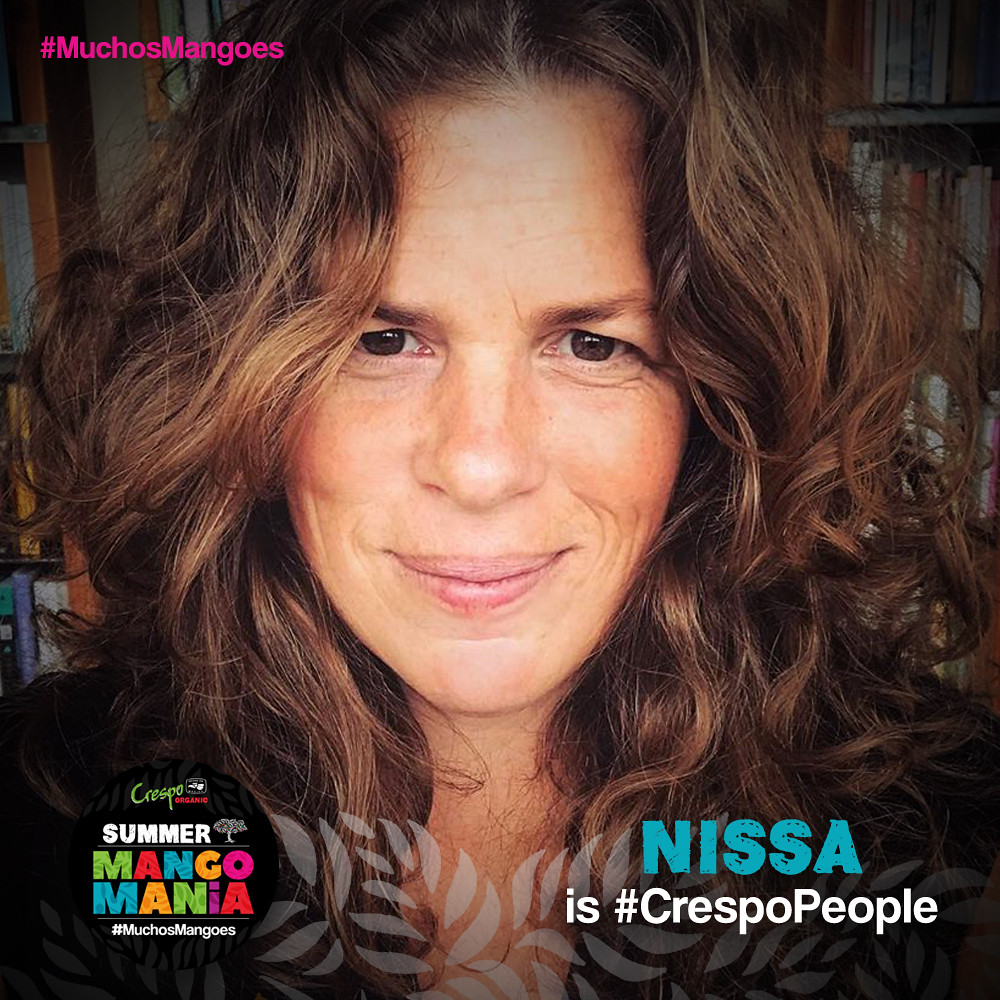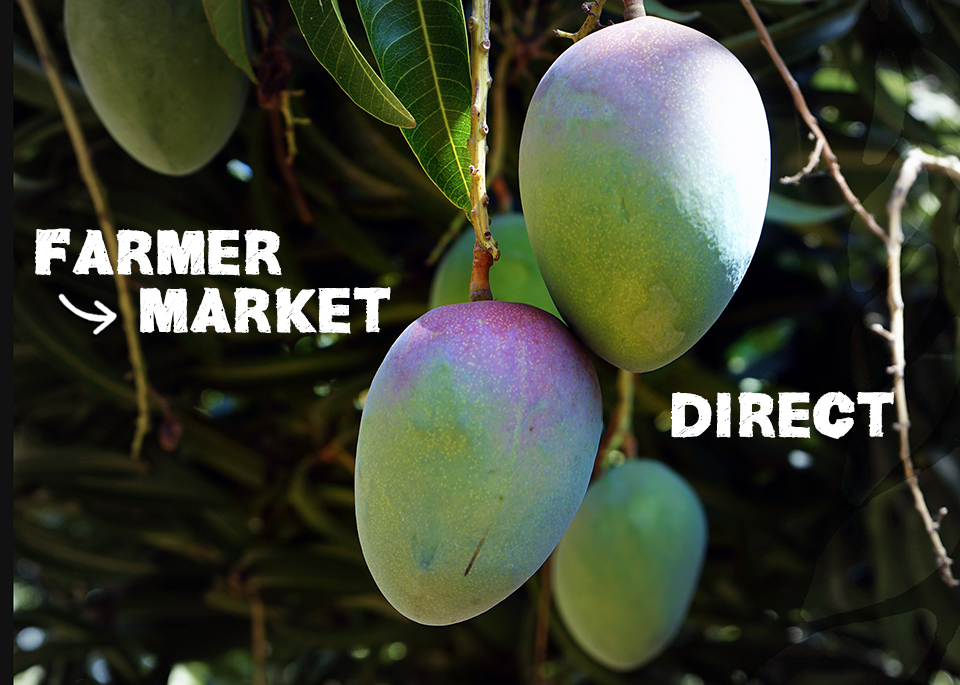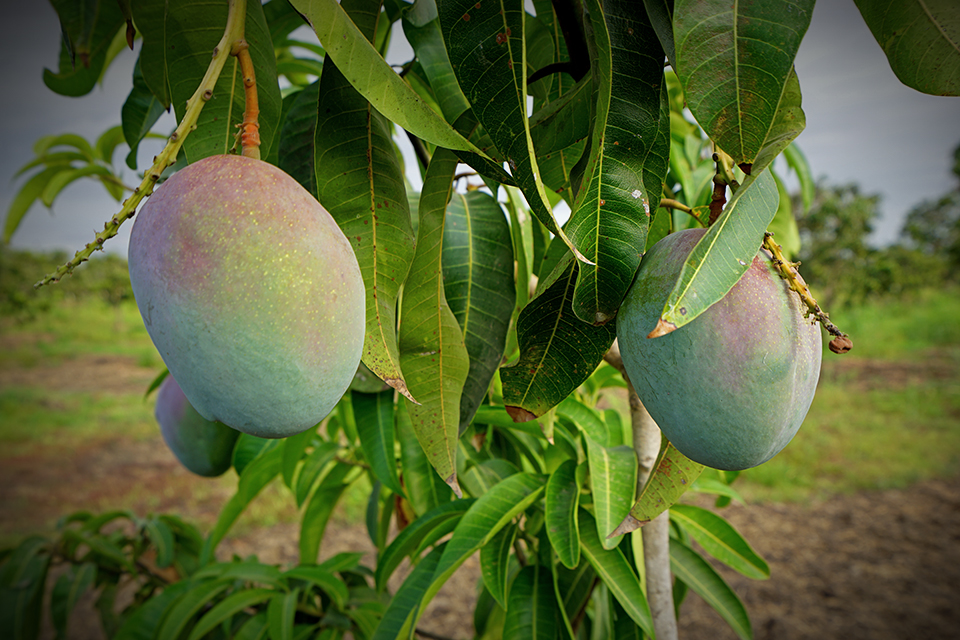Analysis: Mexico's transitioning mango regions

By Nissa Pierson of Crespo Organic Mangoes. This article was originally posted on Nissa's blog, Under The Mango Tree.
Volumes, Quality, Opportunities, Uncertainties, Confusions & COVID-19
Chatter about ‘normal life’ is peppering the air these days: When will we be returning to it? What will it look like when we get there? What’s the economic forecast? …And so on, and so forth.
Like pretty much everyone else, I don’t have answers to these particular questions. Expertise seems to be just more chatter and hypothesizing.
I am just one voice in the mango industry, but I am, by nature, a seeker and sharer of information. I have applied this to my role in the mango industry and continue to share macro-level information regarding the mango industry as a whole and the micro-level information regarding organic Mexican mangoes.
I started this blog as a means to share information on Crespo Organic mangoes. It has proven to be a valuable resource, demonstrating the connectedness of the fresh produce industry and mangoes, in general. It helps put names to faces and connects the people and culture of Mexico to the produce industry.
I am well connected to many knowledgeable industry players throughout Mexico and Latin America, as well as the USA and Canada. They provide me with invaluable insight into the markets. In this way, I am uniquely positioned – consider it an outcome of my boots-and-ears-on-the-ground philosophy and a well-traveled global resume.
As I see it, my ‘job’ with this blog is to collect and share the information I have access to, especially seeking insight which is both valuable and hard to come by. I am not shy about sharing my opinion, where I deem it beneficial. I have total desire to support, promote, and grow the systems I work with and believe in, such as El Grupo Crespo and specifically Crespo Organic Mangoes.
I do believe there is room enough for everyone in this industry, and a little competition is just as important as cooperation and transparency for true growth. By sharing this information, I am to help the whole mango world, regardless of whose name is on the box or the country of origin.
Right now, there is a gaping hole in the information available, and information can help us all maneuver through and climb out of this mess. I firmly believe that we need more transparency from farmer-to-plate and more direct trade. The fewer hands between hands, the better. We also need to be more honest about the challenges we face. Working together to solve them.
So, here goes my attempt to collect and share information on the current state of affairs in the Mexican mango industry as I see it. The update comes at a time when the Mexican mango season is preparing for one of the largest regional shifts in production. This transition happens around this time every year when the southern regions of Oaxaca and Chiapas finish producing, and the northern regions of Michoacán, Jalisco, Nayarit and Sinaloa begin to begin.
The northern regions are volume super-producers, marked by a profusion of fruit, lower market pricing, and many more varietals. This happens to coincide with the onset of American summer – long, hot days that make mango-eating almost mandatory.
This year, the transition coincides with the global COVID-19 pandemic, which brings an added layer of confusion and uncertainty despite the excellent quality and large volumes of mangoes ripening on the trees.
As I mull through the information I have collected, I am coming to find that this year’s transition is looking kind of ‘normal’. If you’re anything like me, this assessment may sound a little asinine.
But, from another lens, natures lens, there are signs of normal life which have been happening all along. The sun still comes up, the wind still blows, and, so too, the mangoes have continued to grow and thrive despite the pandemic. As we get deeper into Mexican mango season and the weather continues to warm and production pushes further north, more orchards are moving through their regular developing process – growing, blooming, setting, developing, and ripening – whether we pick, pack, and sell them or not.
Through the lens of the mango, things have been moving in a somewhat normal progression throughout February in the remote southern regions where the season began. It’s just that now workers are wearing masks and spread further apart on the packhouse floor. Considering packhouses have long followed strict food safety guidelines and have had worker well-being protocols in place, the changes have been fairly minor.
With that said, there were a few hard weeks, especially for many conventional farmers who experienced a lot of fruit drop when the conventional market literally stopped. This was not ‘normal’. Usually it’s possible to sell fruit at some price, but this time it was not. There was a major spike in sales and then a sudden drop, most likely a product of misinterpreted demand. Markets have now begun to look kind of normal.
The organic sector by comparison has retained strong demand with the fresh mango commodity and in general with organic produce. Organic geared retailers are faring well and seemed to brim with fresh foods. The Organic Produce Network is reporting a 22 percent uptick in organic fresh produce sales for the month of March. The network reports that organic fruits and vegetables are out preforming many conventional products. It will be interesting to watch the evolution of organic produce, in particular in the retail sector in the months and years ahead. Perhaps, hopefully consumers are understanding the importance of fresh organic produce as we forge a path ahead, into a new future.
Not to say that things are not complicated, especially through the lens of buyers and sales folks. Trying to gauge demand has remained difficult for many. I assume that working from home means that many are now even less equipped with the technology that captures, interprets, and predicts sales data. It’s not easy to predict what consumers will do, buy, and eat regardless of what commodity you work in, on a normal day, let alone during this.
I’d say that the job we’ve been doing over the past 5 years with Crespo Organic, coupled with consumer and retailer support for organic goods, has resulted in the stable sales we are seeing even through the pandemic. Many in the conventional world tell me that people don’t want mangoes right now, but we see a different story in our numbers. I think this is because we’ve made sure that part of our brand remained consistent in size, volume, and price from the beginning to the end of each season. Support begets support.
We’ve been consistent in our delivery, and our customers have been quick to pass the savings to customers, offering a low everyday price for Crespo Organic Mangoes. In the last several weeks, we’ve seen steady sales all over the country, even in some of our mass market retailers. Consumers are continuing to buy and eat healthy organic fruits as we continue to deliver them consistently.
On the packhouse side, Mexico has so far been shielded. Fortunately, timing has been on our side. The Mexican mango industry has been picking and packing in the remote southern regions of Chiapas and Oaxaca. The virus has so far stayed far from the region. Few to no outsiders is the norm here. The northern regions are trickier in this regard. Despite the mango packhouses being located in more remote locations of the regions, the northern regions are much more intermingled with larger towns and cities.
I want to acknowledge here that anything can change at any moment. Nature proves and has shown us this is so, time and time again in agriculture. In our business we are prepared for instant change. But for now, for today, this …..kind of…. normal report is today’s reality. Despite all that could, would, or will happen.
Overall, the weather continues to be cooperative throughout Mexico. Ample volumes of fruit will continue to appear as we move deeper into the warmer summer months. Prices are currently looking stable compared to this time in previous years.
Here are the micro-updates by region and what we can expect if this degree of normal continues.
Oaxaca is expected to finish off the season in about 2 weeks, or by the first of May. This is an earlier than usual ending, by about 3 weeks, and it is most likely due to warmer weather. Ataulfos are just about finished from Oaxaca, so we will only see Tommy Atkins coming out of this region for the remaining weeks – mostly large fruit.
Chiapas will wind down around the first week of May. So many little micro regions are speckled throughout and in-between the mountains, providing an elongated season for both the Tommy and Ataulfo varietals. Expect all sizes of Tommy’s and a trickling of Ataulfos, mostly on the small to mid-range size, as the region finishes.
Michoacán is currently revving up. Despite having a lower volume overall, there is a decent amount of fruit. Climate change has brought great challenges to all regions but Michoacán, in particular, continues to be less predictable. What can be predicted is the notoriously small fruit coming from the region (peaks of 10-12). For a few weeks, this will be helpful when combined with the southern region’s large fruit, offering a wide array of sizing options. After the large fruit stops, the market is expected to get complicated with a shortage of large fruit. Haden mangoes, along with Tommy Atkin mangoes, grow in this region. Haden is my favorite. Although small, it’s a nice highlight of the May varietals.
Nayarit is expected to start their seasonal harvest around May 10th, maybe a little earlier. In my experience, this is around the time it usually starts (I always remember it as just missing Cinco de Mayo sales J). This is when we’ll see Ataulfo volumes jump back and stay voluminous until the end of July. Tommy Atkins abound in this region, as well, and sizing expectations are currently too difficult to gauge. Although, a wide variety of sizes is what most orchard observers predict based on their historical insight.
Sinaloa fruit continues to develop well, but start dates, volumes, etc. are too early to predict.
COVID-19
After identifying the most valuable information regarding how COVID-19 is affecting Mexico’s mango industry and our own processes in El Grupo Crespo, I have chosen to focus on the economics. This is because many of the decisions happening right now are shaped by the economics leading into the COVID-19 pandemic and the economics Mexico wants to transition toward once the pandemic steels and eventually clears.
A gigantic portion of the Mexican population lives day-by-day, with many just getting by. Shutting down completely has not been an option. The Mexican government has come under criticism for its position on COVID-19, which focuses on the economics, which one could also argue is a matter of life and death as well, when people are living day by day.
There is currently no national directive from the Mexican government. Most policies and mandates are coming from regional and local authorities, based on the perceived and actual threats happening on the ground. There are more stay-at-home orders in the more densely populated areas with similar essential business directives. In more remote regions, like where many of the mango orchards and packhouses are located in Chiapas and Oaxaca, it’s more social distancing, gloves, masks, and hand-washing.
Most packhouses will open for the northern region’s onset as planned. The one caveat is that all are reporting less packing capacity for at least the next several weeks, as they reduce numbers of people in each packhouse to safeguard employee health. For the most part, this will simply mean lower output, which changes their economics and increases costs associated with running fast-paced growing, picking, packing, and shipping systems with less people and more health and safety checks involved. This is definitely an added and unprecedented stress.
The one thing everyone I spoke with agrees on is that everything is uncertain despite this kind of normal status. On any given day, everything can change. For now, it continues.
El Grupo Crespo is currently packing from Oaxaca and Chiapas and will continue until those regions end. Empaque Don Jorge I (the original) is set to open and get its hydro-hydro-thermic tank certification on April 25th. They should be able to commence seasonal packing by the last week of April, packing Michoacán, Jalisco (cv) and Nayarit when the fruit is ready. EDJ is the largest hydro-thermic packhouse in Latin America.
Organic volumes will continue to be ample underneath the El Grupo Crespo umbrella, and Crespo Organic Mangoes will continue to be priced economically as we move into and through Mexico’s most ample production zones.


















































